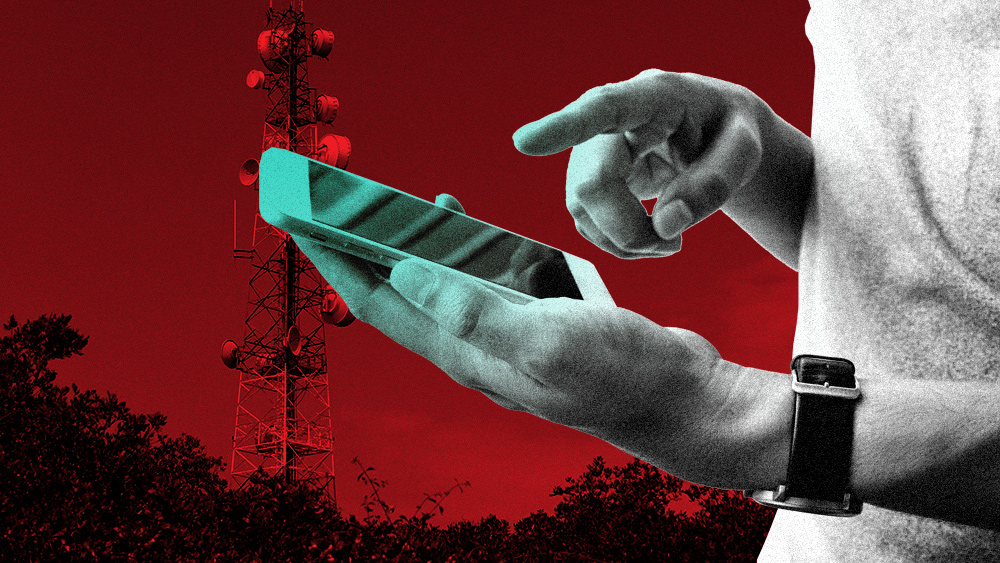In the past, nearsightedness wasn’t a thing – then technology happened
09/20/2019 / By Zoey Sky

Have you ever wondered how people with myopia (nearsightedness) lived before eyeglasses were invented? Experts noted that instead of treating the condition as a disability of sorts, people with myopia were valued because of their contributions to the arts, such as illustrating manuscripts.
What is myopia?
Myopia occurs when a person’s eyeballs are too long. If you are myopic, you can see objects that are close to you, but you may have trouble seeing distant objects clearly.
Myopia is a common condition. The American Optometric Association reports that about 30 percent of Americans are nearsighted.
The symptoms and risk factors of myopia
Experiencing blurry vision when you look at faraway objects is the most obvious symptom of nearsightedness. For example, adults with myopia have trouble seeing street signs clearly while driving.
Other symptoms of myopia may include eyes that hurt or feel tired, headaches, and squinting to see far away objects. These symptoms are often resolved after you are prescribed a pair of eyeglasses or contact lenses.
Myopia is usually diagnosed in children who are aged eight to 12. Adults may remain myopic if they had the condition as children. Adults can also become nearsighted because of health conditions like diabetes.
Visual stress is another risk factor for myopia. This type of stress causes eyestrain due to detailed work, like using a computer or reading. Myopia can also be inherited, especially if one or both of your parents are nearsighted.
Myopia in the past
It is believed that Aristotle wrote the first observations of myopia in 350 B.C.
Neil Handley, a museum curator at the College of Optometrists in London, explained that there is little information about how myopia was dealt with before the invention of lenses for nearsighted people in 15th century Europe.
During 13th century Europe, there are records of handheld convex lenses used to treat a type of age-related vision loss called presbyopia. These lenses are similar to modern reading glasses. However, Handley said that this kind of technology wasn’t applied to address nearsightedness for another 200 years.
An early 16th-century portrait of Pope Leo X, a member of the politically influential and myopic Medici family, painted by the renowned Italian painter Raphael shows one of the first known examples of a handheld, concave lens.
The late creation of nearsighted glasses implies that treating myopic individuals in the past wasn’t considered a priority. It’s also possible that nearsighted people adjusted to their condition by making changes to their lifestyle, added Handley.
Myopic individuals could also have been assigned jobs suited to their ability to see instead of “finding technological interventions that made everybody equal,” he noted.
In medieval European monasteries, nearsighted individuals were historically valued for their creative contributions, such as illuminating manuscripts and painting Bibles, both of which required tiny and meticulous brushstrokes.
Handley explained that nearsighted people were sometimes encouraged to remain myopic since it was necessary for their jobs during medieval times. This was how societies adapted to conditions that are now considered disabilities.
Myopia as a “modern condition”
Rates of myopia have skyrocketed in the last few years, and researchers have estimated that at least 50 percent of the world’s population could develop the condition by 2050.
Health experts are trying to identify the cause of this alarming trend, and some have even labeled it as an epidemic. Some say that genetic causes or an increase in studying and screen time are linked to myopia, but other scientists suggest that adolescents who spent less time outdoors have a higher chance of developing nearsightedness.
While myopia can’t be prevented, there are some things you can do to protect your eyes:
- Follow a balanced diet full of fresh fruits and vegetables and omega-3 fatty acids.
- Manage chronic health conditions like diabetes and hypertension (high blood pressure).
- Avoid smoking.
- Get your eyes checked regularly and wear corrective lenses prescribed by your eye doctor.
- Always wear sunglasses with ultraviolet (UV) radiation protection.
- Use protective eyewear when working with toxic chemicals and other dangerous activities.
- Take regular breaks from detailed work, like looking at your computer screen for several hours on end. (Related: Three natural ways to improve your eye health.)
If you experience blurred vision, halos around lights, or other changes in your vision, contact an eye doctor immediately.
Sources include:
Tagged Under: disability, eye health, eyeglasses, eyes, eyesight, history, manuscripts, men's health, myopia, nearsightedness, poor vision, spectacles, women's health
RECENT NEWS & ARTICLES
COPYRIGHT © 2017 GLITCH.NEWS
All content posted on this site is protected under Free Speech. Glitch.news is not responsible for content written by contributing authors. The information on this site is provided for educational and entertainment purposes only. It is not intended as a substitute for professional advice of any kind. Glitch.news assumes no responsibility for the use or misuse of this material. All trademarks, registered trademarks and service marks mentioned on this site are the property of their respective owners.



















